Taoist Travel Ideas Inspired by Nezha
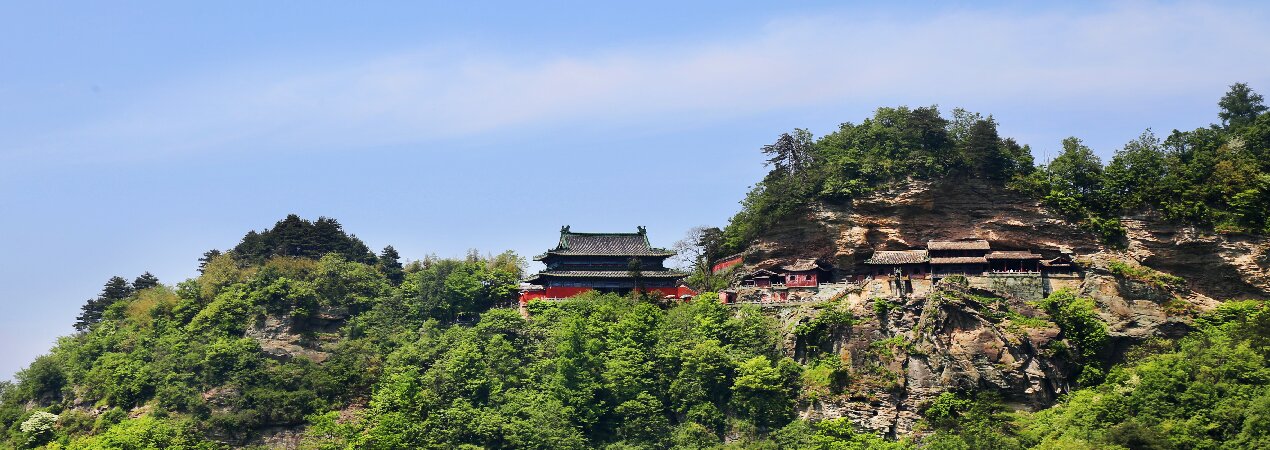
Nezha movies contain rich Taoist cultural connotations. By visually presenting Taoist philosophy, depicting Taoist immortals, and aesthetically rendering Taoist fairylands, the film innovatively integrates Taoist ideas into figurative audiovisual works. Their Taoist themes are primarily expressed in three aspects: “My fate is determined by myself”, Taoist talismans and incantations and the portrayal of celestial realms.
Taoist Elements in Nezha's Story
1. Nezha(哪吒)
In the movie, Nezha emerged as the rebellious image of "the reincarnation of the magic pill", but realized the fate counterattack through self-struggle, which coincides with the core idea of Taoism that "my life is determined by me and not by heaven". In Taoist culture, Nezha was reincarnated as a spiritual bead, and achieved "sanctification of the flesh" by eviscerating the bones and returning to the father and incarnating the lotus flower, which reflected Taoism's pursuit of transcending the flesh and pursuing spiritual sublimation.
2. Taiyi Zhenren(太乙真人)
In Taoism, Taiyi Zhenren is one of the twelve golden immortals under Yuanshi Tianzun. He lives in Jinguan Cave in Qianyuan Mountain, symbolizing the Taoist immortals' free and easy life attitude of following nature. In the movie, he teaches Nezha with the concept of "following the will of heaven and explaining the way of heaven", which fits the Taoist idea of pursuing unity with "Tao" and following the laws of nature. His mount, the Nine-Colored Deer, and the "Mountain, River and State Map" he uses are also derived from the magic weapons and mount traditions of immortals in Taoist mythology.
3. Shen Gongbao(申公豹)
Shen Gongbao is discriminated against in the movie because he was born in the demon clan. This character setting implies the dialectical thinking of "good and evil" in Taoist culture. Taoism emphasizes that all things have spirits and should not be judged by birth. Shen Gongbao's struggle and resistance reflect the Taoist values of breaking inherent prejudices and pursuing equality. At the same time, his practice of Taoism and his attempt to prove himself through the Investiture of the Gods also reflected the common aspirations of Taoist practitioners to transcend themselves and be included in the ranks of immortals.
4. Qiankun Circle and Hun Tian Ling(乾坤圈和混天绫)
Nezha's Qiankun Circle and Hun Tian Ling are not only combat weapons in the movie, but also contain profound Taoist philosophy. Qiankun Circle is a gold object, belonging to Yang, symbolizing toughness and restraint; Hun Tian Ling is a silk, belonging to Yin, representing flexibility and tolerance. The combination of the two embodies the Taoist philosophy of "Yin and Yang are mutually reinforcing and restraining". In Taoist culture, the balance of Yin and Yang is the basis for the operation of all things. The combination of Qiankun Circle and Hun Tian Ling is precisely the concrete manifestation of this concept.
5. Wind and Fire Wheel and Fire Spear(风火轮和火尖枪)
The Wind and Fire Wheel and Fire Spear are also full of Taoist elements. The Wind and Fire Wheel is named "wind" and "fire", corresponding to the "fire" and "wood" in the five elements of Taoism (wind helps fire, wood produces fire), symbolizing strong action and destructive power; the Fire Spear is red all over, which further strengthens the attribute of "fire". In the Taoist magic system, the mutual generation and mutual restraint of the five elements is an important theoretical basis. Nezha's use of these magic weapons shows the Taoist wisdom of controlling and using natural forces.
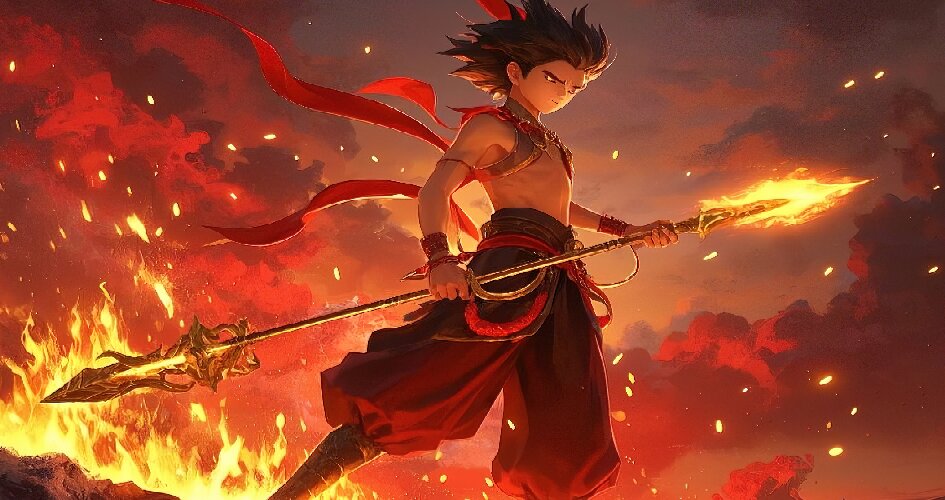 Fire Spear
Fire SpearRecommended Taoist Holy Sites
Qianyuan Mountain
Qianyuan Mountain (also known as Tiancang Mountain) in Jiangyou City, Sichuan Province is about 35 kilometers away from the city. It is a renowned Taoist sacred site with a profound history in northwestern Sichuan. Jinguang Cave (also known as Taiyi Cave) — located in the upper-middle section of Qianyuan Mountain — has been revered since ancient times as the cave where Taiyi Zhenren practiced alchemy and cultivation. The cave opens on a sheer cliff that resembles an axe- or knife-cut formation. To the lower left of the cave lies a bottomless valley of unpredictable depth. The cave hall is spacious, capable of accommodating thousands of people. On the rock walls are hundreds of stone statues depicting Taiyi Zhenren, Nezha, Sanqing Laozu (the Three Pure Ones), and various deities.
Wudang Mountain
Wudang Mountain, a renowned Taoist sacred site in China, has attracted countless literati, martial artists, and travelers seeking spiritual enlightenment since ancient times with its unique charm. Its majestic mountains, overlapping peaks shrouded in clouds, resemble a flowing ink painting scroll. Upon stepping into Wudang, the first thing that catches the eye is the quaint and elegant architecture, built into the mountain terrain, seamlessly integrated, and in harmonious coexistence with the surrounding natural environment. This demonstrates the profound Taoist philosophy of harmony between humanity and nature.
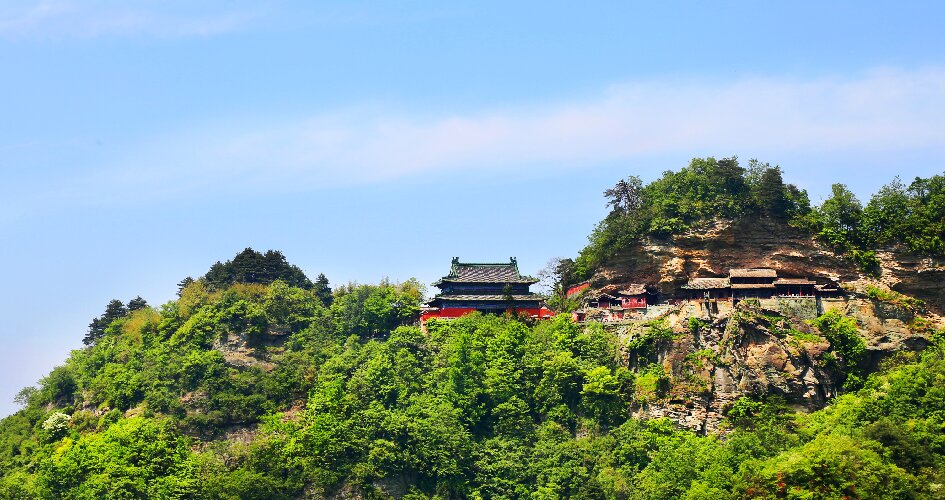 Wudang Mountain
Wudang MountainQingcheng Mountain
Qingcheng Mountain, a Taoist "museum" housing numerous historical relics and Taoist temples, is a renowned Taoist mountain steeped in Taoist history and culture. Its main attractions include Jianfu Palace, Tianshi Cave, Shangqing Palace and Laojun Pavilion. Tianshi Cave, in particular, stands as the largest Taoist temple on Qingcheng Mountain. Inside the cave, there are statues of "Tianshi" Zhang Daoling (the founder of Taoism) and his 30th-generation grandson "Xujing Tianshi". Parts of the classic TV series Journey to the West were filmed here. With its extremely high forest coverage and serene environment, the mountain is an ideal place for spiritual cultivation.
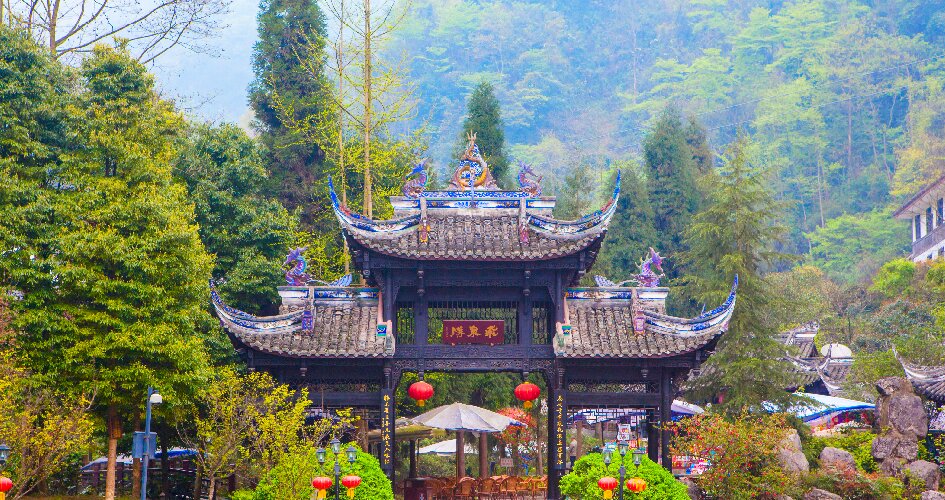 Qingcheng Mountain
Qingcheng MountainLonghu Mountain
Among the four renowned Taoist mountains in China, Longhu Mountain in Jiangxi Province stands out for its distinctive Danxia landform, profound Taoist heritage and unique Taoist culture encompassing talismans, spells and traditional medicine. The mountain's magnificent yet serene natural landscapes offer an ideal setting for Taoist cultivation while having inspired countless literati and scholars to compose poems and create paintings here for centuries.
Kongtong Mountain
Kongtong Mountain, hailed as "the First Mountain of Chinese Taoism," is situated in Pingliang, Gansu Province. Historical records show that architectural constructions began on the mountain as early as the Tang Dynasty. Over successive dynasties, pavilions, pagodas, and bell towers were built, dotting the mountain peaks. Combining fantastical natural landscapes with profound humanistic heritage, Kongtong Mountain has been celebrated by numerous scholars and literati throughout history. In summer, the average temperature in the mountain area remains around 25°C, making it an ideal destination for hiking and summer getaways.
Recommended Taoist Holy Sites Tour Routes
Taoism's inherent philosophy, its exploration of nature and life, and its social ethics hold multi-dimensional educational insights for modern pedagogy. Visiting Taoist sacred sites allows one to immerse in profound Taoist culture and nurture spiritual growth. Below is a curated list of tour routes to major Taoist holy places.
Day 1: Arrival at Wudang Mountain, South Divine Path Tourist Area
Upon arrival at Wudang Mountain, check in at a local hotel and take a short rest. In the afternoon, visit the South Divine Path Tourist Area. This area is renowned for its well-preserved natural scenery and Taoist cultural relics. Here you can feel the tranquility brought by Taoist culture while understanding the spiritual connection between Taoism and nature.
Day 2: Wudang Mountain: Jinding (Golden Summit), Zixiao Palace, Prince Slope
In the morning, take the cable car to the highest point of Wudang Mountain, Jinding (Golden Summit). The cable car allows you to have a panoramic view of the fairyland-like beauty of Wudang Mountain. Jinding is a sacred symbol of Taoism. It is a bronze and gold building from the Ming Dynasty decorated with exquisite Taoist patterns. The whole palace reveals the atmosphere of Taoist culture. Then go down the mountain to visit Zixiao Palace, which has the architectural style of red walls and golden tiles and ancient Taoist rituals. Finally, visit Taizipo and appreciate the architectural wonders here: "Nine Bends of the Yellow River Wall" and "One Pillar and Twelve Beams".
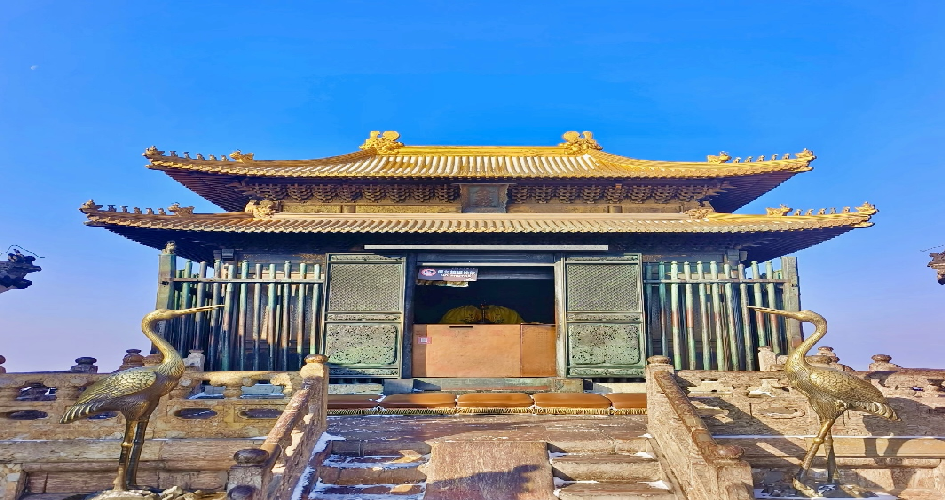 Jinding (Golden Summit)
Jinding (Golden Summit)Day 3: Transfer to Chengdu, Exploration of Kuanzhai Alleys
After breakfast, take the high-speed train from Wudang Mountain to Chengdu. After arriving at your hotel in the city center, head to Kuanzhai Alleys. Wander through these restored Ming and Qing courtyards, which have been transformed into teahouses, handicraft shops and restaurants. Taste Sichuan specialties such as Dandan noodles and spicy wontons, or watch traditional Sichuan opera performances featuring face-changing acts.
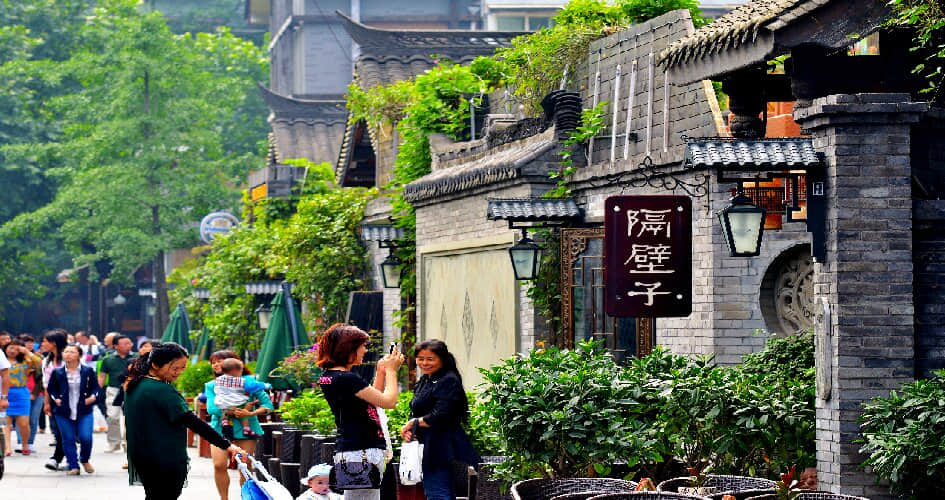 Kuanzhai Alleys
Kuanzhai AlleysDay 4: Transfer to Qingcheng Mountain, Front Mountain Tour
It takes about 1.5 hours to drive from Chengdu to Qingcheng Mountain. First, visit the Front Mountain (Qianshan), which is the core area of Taoist culture. Hike along the stone path lined with bamboo forests to reach famous attractions such as Tianshi Cave (the birthplace of Taoism), Shangqing Palace and Laojun Pavilion. The architecture on the mountain, including wooden temples and stone pavilions, embodies the Taoist concept of "harmonious coexistence between humanity and nature". At night, stay overnight in Tai'an Ancient Town at the foot of the mountain, a quiet town with traditional Sichuan-style inns and hotpot restaurants.
Day 5: Qingcheng Mountain to Chengdu, Giant Panda Base Visit
After breakfast, return to Chengdu and visit the China Giant Panda Conservation and Research Center. Here, you can explore the panda cub nursery and the newly opened "Panda Valley" area. You may even have the opportunity to experience feeding pandas under the guidance of professionals. Finally, the trip concludes with a farewell dinner featuring Chengdu hotpot.
 Giant Panda Base
Giant Panda BaseIf you would like to explore Taoist cultural tourism in more depth, you can click on "Make My Trip" to customize a unique Chinese Taoist cultural tour.
Drop us a line and we'll connect you with the top China expert in no time!